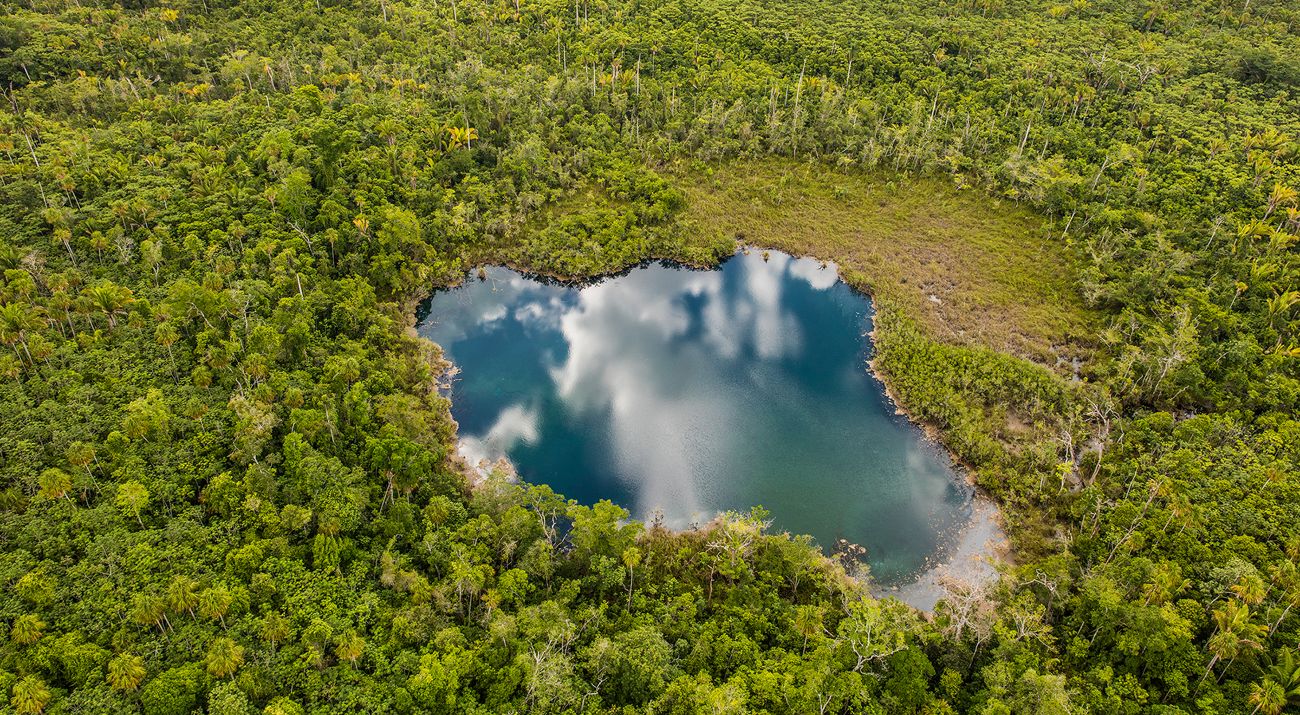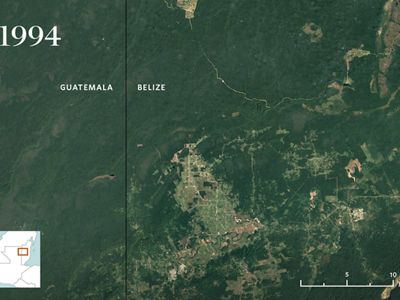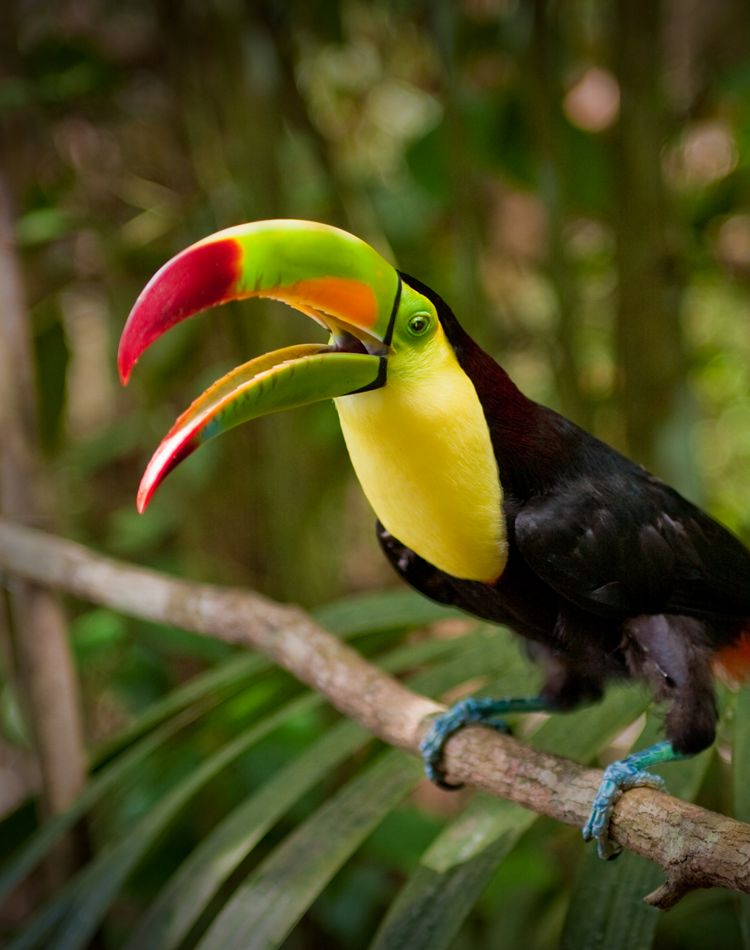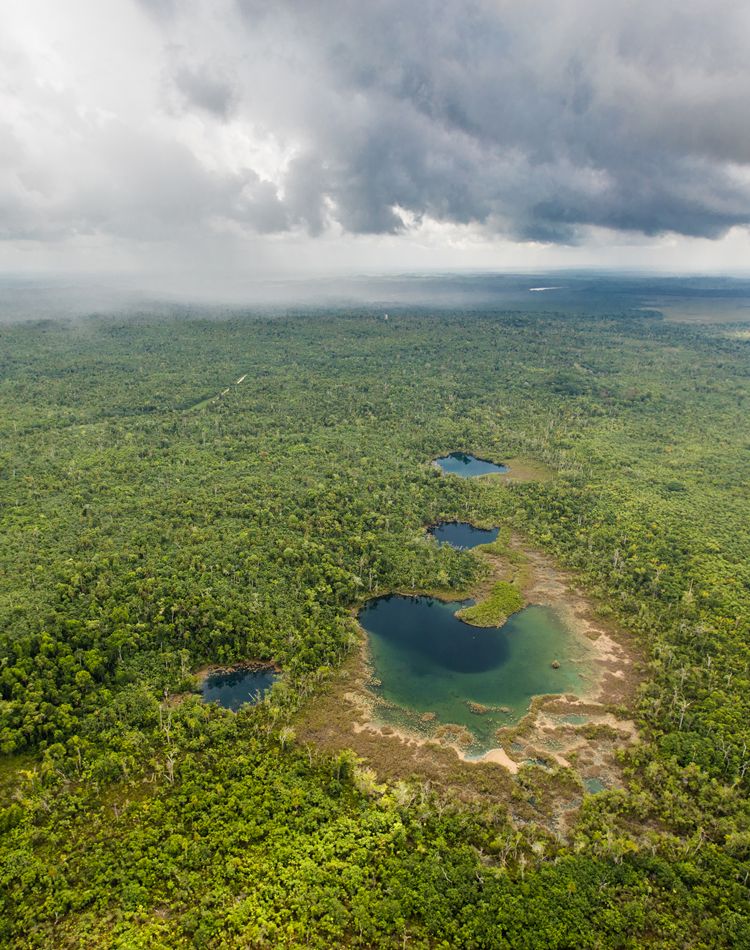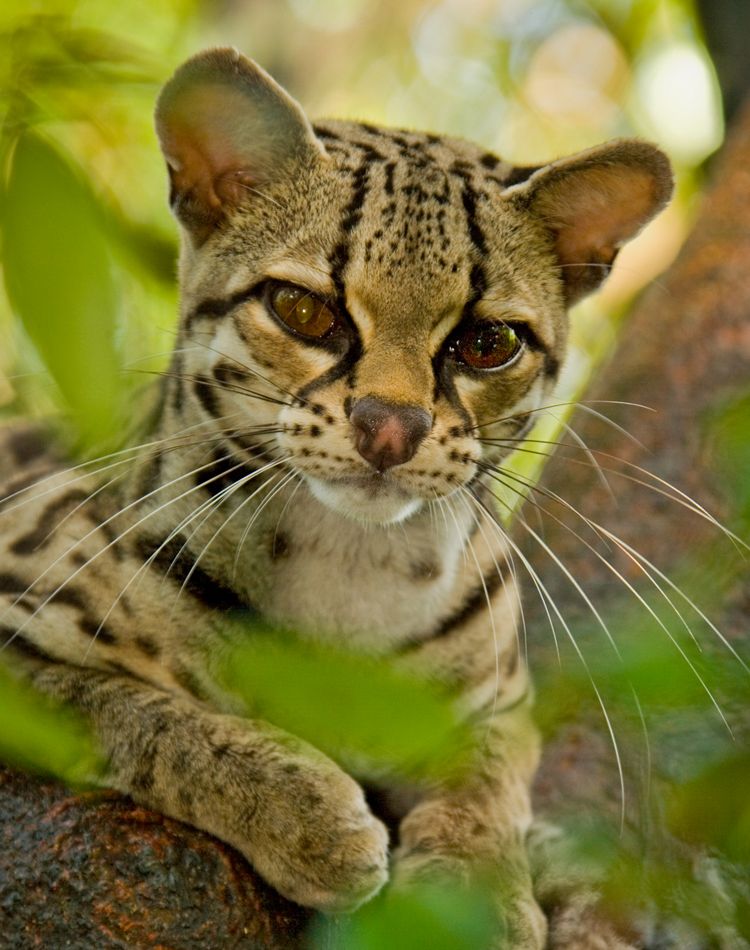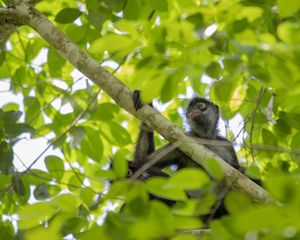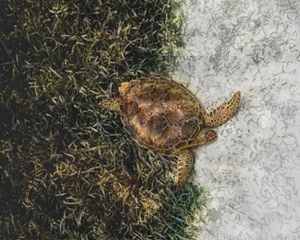Protecting the “Jewel” of Central America
Belize’s Maya Forest harbors natural treasures key to biodiversity and climate action—a multisector coalition just helped secure its future.
From above, the emerald shades of the Selva Maya hint at the diversity of life teeming under mahogany and gum species, barely betraying that much of it is post-colonial regrowth, rivaled in tenure by the ancient stone ruins that rise above the treetops. In withstanding hundreds of years of threats, this Mesoamerican ecosystem is now the largest contiguous block of rainforest north of the Amazon, safeguarding treasures of incalculable value.
But aerial images from recent decades also show this forest receding at the edges, where it is increasingly logged for timber or slashed and burned for agriculture. Yet the true, underrecognized value of places like these, so globally rare they are known as “last-chance ecosystems,” is in the collective power of the intact system.
Wildlife habitat. Water security. Clean air. Climate mitigation and adaptation. In other words, $125 trillion in ecosystem services every year without which, we simply cannot survive.
That is why the purchase of 236,000 acres (96,000 ha) of the Selva Maya’s tropical forest in northwestern Belize—announced today by a multisector coalition including The Nature Conservancy, and enabled by a catalytic contribution from the Wyss Foundation—is so significant. Together with the Rio Bravo Conservation Management Area established in 1989, the new protected area represents nearly a tenth the land area of Belize and includes some of the most biodiversity-rich forest in the world.

The challenge: Protecting the best of Belize
Not much of nature remains untouched by people and our economic undertakings—about 5 percent, by conservative estimates. Worldwide, around 17 percent of lands are protected, a bit more than half as much as the global target to be achieved by 2030: a goal known as “30x30.”
Of course, conserving barren rock and ice will do little to ensure the diversity of life prevails. Instead, it is crucial to protect and sustainably manage areas that are representative of the Earth’s species and habitats. Part of that means preserving the world’s most pristine places—places like the Selva Maya.
“Deforestation has been closing in,” explains Edilberto Romero, executive director at the Programme for Belize (PfB). “If it’s not protected, it will eventually disappear.”
Since getting involved in conservation in the 1980s, Romero has watched the boundaries of unprotected tracts of the Selva Maya retreat. The health of the Rio Bravo Reserve his organization manages proves that protection works, he says, but it is not easy.
“In the northern part of the country, most of the timber has been depleted—especially mahogany, an economically valuable species,” Romero says. “People are always trying to go in and steal our trees, so we need to have our rangers actively patrolling.”
About a dozen rangers patrol Rio Bravo’s 120-mile (193 km) perimeter in an effort to deter illegal hunting, fishing and logging. It can be hard to keep up with the culprits, who often learn the rangers’ schedules and, increasingly, come armed. For their part, PfB’s unarmed rangers have adapted by using camera traps, drones and, ultimately, the courts for back up.
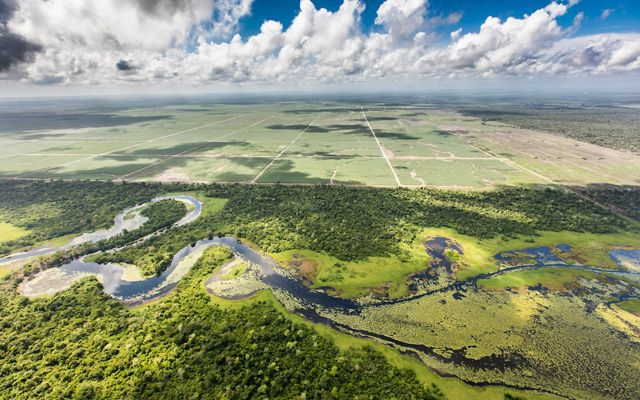
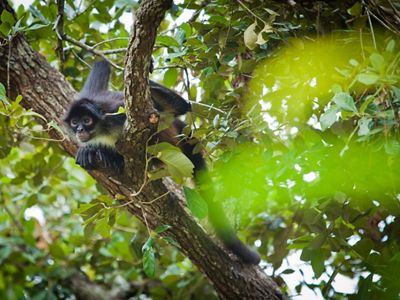
And then there’s climate change. While it’s relatively common for lightning, even arson, to spark a forest fire, Romero has recently observed more frequent and intense blazes fueled by drier, hotter conditions in the region.
There’s no shortage of threats to this frontline of global conservation, but the same can be said of the reasons to invest in its future. The newly acquired parcel of forest, adjacent to the Rio Bravo Reserve, does just that.
“This project is an example of remarkable conservation action, with innovative financing, innovative partnerships, and unusual levels of collaboration,” says Wendy Paulson, chairman of the Bobolink Foundation, a major partner that worked closely with both TNC and Rainforest Trust on the Belize Maya Forest project. “Most importantly, it ensures a future for a very special corner of the planet and the extraordinary biodiversity it shelters.”
The stakes: A big win for global biodiversity & climate action
At the intersection of Guatemala, Mexico and Belize, the Selva Maya fans out across 38 million verdant acres (15 million ha). It hosts 400 bird species and 70 mammals, including the endangered black howler monkey and that most regal of big cats in the Americas: the jaguar. Their fates are intertwined, each organism playing a vital role in the health of this fabled ecosystem—but also with that of all humankind.
This is no mere philosophical musing: it's impossible to fully fathom the value of tropical forest biodiversity to global society, and the Selva Maya is among the largest of these habitats worldwide. However, we do know that forests contain living carbon reserves that could afford 23 percent of the cost-effective climate mitigation needed by 2030—while tropical deforestation is currently causing 8 percent of global greenhouse gas emissions.
Between 1986 and 2018, forest stocks in Belize declined by more than 28 percent, and around the Selva Maya, deforestation rates outpace the national average nearly four times over. In expanding the area under protection, the multisector coalition is effectively fighting climate change in two ways: preventing emissions from tree loss, and ensuring they can continue to suck excess carbon out of the atmosphere.
While the small Caribbean nation inherited a strong foundation of largely intact lands and waters from its Mayan ancestors, broad collaboration among public and private sector actors has proven essential to alleviating excess pressure on these resources—and a big part of the strategy is protection.
“When you look at our protected areas system, we have this amazing network that extends from north to south and east to west, ensuring connectivity and habitat representation across the entire country,” says Julie Robinson, TNC’s Belize Program Director.
For jaguars, that translates to ample space to roam, making Belize a haven for a healthy population that nonetheless faces poaching and habitat loss across the Americas. The IUCN Red List ranks the Selva Maya among places the near-threatened species still has a high chance of survival.
“Big cats are thought to expert top-down effects in structuring ecosystems,” says Marcella Kelly, a professor at Virginia Tech’s Department of Fish and Wildlife Conservation who began monitoring the populations with camera traps in 2001. “But also, they require large areas due to their wide-ranging behavior such that by protecting them, you can ensure protection of large areas that encompass lots of other species.”
“Since the Maya Forest is a stronghold for jaguars in Central America, that would be lost if the area is further fragmented or cleared,” Kelly says. “If we want to maintain one of the world’s biodiversity hotspots, it would be essential to protect this area.”
The big picture: A time to protect, and a time to manage
After enduring centuries of colonial rule, Belize gained independence in 1981, and with it came a revolutionary national anthem rich with allusions to the “untold wealth” nature had bestowed upon the region. With full sovereignty over their resources, Belizeans have surpassed each of the goals laid out by the UN’s Convention on Biological Diversity (CBD)—with 36 percent of the territory under some form of legal protection, they have already proven 30x30 to be within reach.
“Belize has a long history of appreciating our resources, both terrestrial and marine,” says TNC’s Robinson. “The country is very progressive in terms of sustainable development and natural resource management.”
Indeed, it’s among the few with a national biodiversity office and a ministry of “blue economy,” perhaps owing in part to its acclaim as a vacation destination. Tourism represents around 40 percent of the Belizean GDP, and its rainforests alone capture US$15 million annually.
But tourism isn't the only sector that relies on the country's forests. About a quarter of the nation's farms are located in the Orange Walk district, near the Belize Maya Forest. This agricultural region relies on pollinators that sojourn in these parts, as well as the Rio Hondo and New River watersheds that the forest protects.
“[The new protected area] allows us to fulfill further our biodiversity goals of reducing pressures on biodiversity, improving mitigation and adaptation to the impacts of climate change as well as our goals of sustainable management of ecosystems for the goods and services they provide,” says Hannah St. Luce-Martinez, director of Belize’s National Biodiversity Office.
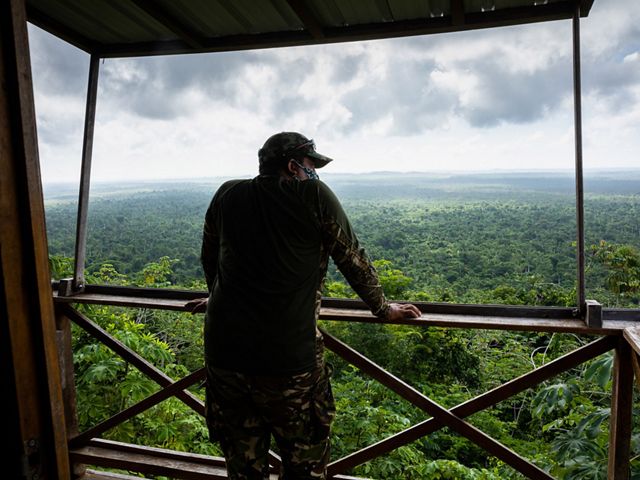
Key to saving places like Belize's Maya Forest? The communities that live just outside their boundaries.
“Protected areas management comes with a cost—a cost which competes with other national and global social and economic needs,” the director says.
Beyond protection of priority ecosystems, she says, there must also be an emphasis on improving land practices on private lands with a focus on environmental, social and economic sustainability.
“I think if we work with the communities, they’re really supportive of our conservation work,” says PfB’s Romero. “But they also need help.”
In short, preventing further incursions into the Maya Forest will mean facilitating sustainable alternatives to threats—regenerative practices to replace slash-and-burn agriculture, for instance—outside the reserve.
Today, the people of Belize often refer to their homeland as “the jewel,” and it may indeed be among the most priceless resources on the planet—climate and biodiversity action cannot succeed if places of its kind disappear.
But it’s also an heirloom: as the Maya Forest’s name suggests, Mayan civilization once flourished here. Secondary growth forest has replaced the losses from colonial incursions. Lush as it now appears, this last-chance ecosystem is a living monument to resilience, and the wisdom that nature is the investment of our lifetime—and our most important legacy.
Partners who made Maya Forest conservation project possible through years of effort include: Bobolink Foundation, Cornell Lab of Ornithology, Cleary Gottlieb Steen & Hamilton LLP, Corozal Sustainable Future Initiative, International Tropical Conservation Fund, Gallon Jug Estate, Global Wildlife Conservation, Mass Audubon, Programme for Belize, Symphasis Foundation, The Nature Conservancy, The Rainforest Trust, University of Belize Environmental Research Institute, Wildlife Conservation Society, World Land Trust and Wyss Foundation.
Global Insights
Check out our latest thinking and real-world solutions to some of the most complex challenges facing people and the planet today.
